Why Grow Regular Cannabis Seeds?
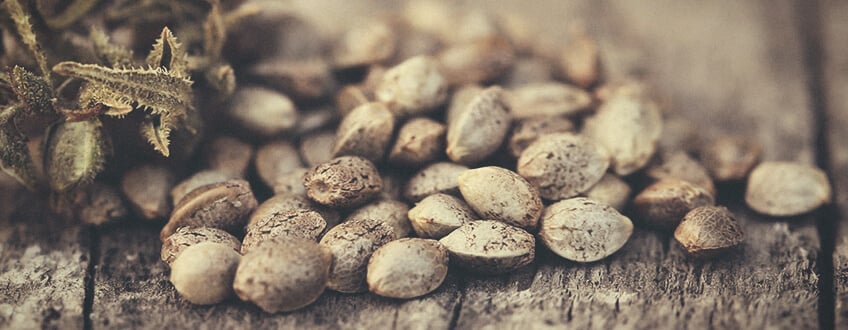
Discover the world of regular cannabis seeds.
Contents:
Regular cannabis seeds operate exactly how nature intended. They have a 50% chance of emerging as either male or female. As such, they allow breeders to create new cultivars and produce better-quality clones.
Use this guide to learn everything you need to know about regular cannabis seeds.
WHAT IS REGULAR CANNABIS?
Regular cannabis seeds are free from human tampering. Every time you germinate them, you're taking a gamble. There’s an even chance that they’ll grow up to be flowering females or pollen-producing males.
If they produce fewer THC-rich flowers, what’s the point of growing regular seeds? Well, males are extremely valuable when it comes to breeding. Plus, regular strains provide superior clones.
Cannabis is a dioecious species, meaning it produces separate male and female plants. Because female cannabis plants grow the best bud, this led to the creation and popularisation of feminized seeds—strains engineered to produce females 99.99% of the time.
BENEFITS OF REGULAR CANNABIS SEEDS
Feminized seeds are ideal for growers looking exclusively for buds, but regular seeds have their own list of benefits. Chiefly, they're paramount in the creation of novel strains. Regular seeds also tend to produce more vigorous plants. These specimens are hardier, can tolerate stress well, and produce cuttings that exhibit explosive growth and awesome yields.
Discover more on the benefits of regular seeds below.
-
BREEDING
Without regular cannabis seeds, there is no breeding! It’s as simple as that. Pick your favorite male and female specimens, and cross them to create offspring that display the best traits of each.
Whether you're after extreme potency, a certain flavor profile, or specific colors, you need regular seeds to make your vision come alive.
-
MOTHER PLANTS & CLONES
Regular cannabis plants provide strong and healthy clones capable of rooting well and growing fast.
Cloning enables growers to make an exact genetic copy of a specific plant. If you like the morphology or color of a certain specimen, you can duplicate it through cloning.
Rooting cuttings will also allow you to produce more plants in a shorter time frame. You’ll skip the germination phase and have a tray of young vegging plants ready to go.
Regular cannabis plants are more suitable for cloning than their feminized counterparts. These clones will be much more stable, possess stronger genetics, and are less likely to become hermaphrodites.
Feminized seeds are only fit for a single harvest, and their genetics have the tendency to become unstable when cloned.
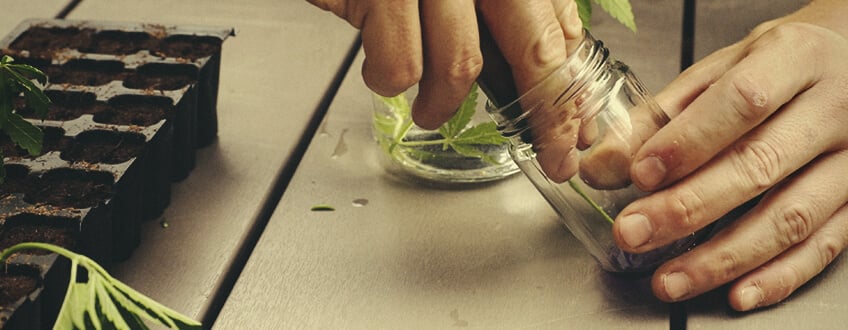
HOW TO GROW REGULAR CANNABIS SEEDS
The process of growing regular seeds is almost identical to growing feminized ones. There are just a few precautions to be aware of.
-
Germination
There are several ways to germinate your seeds. You can plant them directly in the soil, or wrap them in damp kitchen towel for a couple of days. Alternatively, use the Easy Start Kit to boost germination rates. The kit contains a tray with individual compartments for each seed and beneficial bacteria to encourage germination.
The entire germination process takes between 1–4 days. During this time, seeds require a relative humidity level of around 80%. The Easy Start Kit or a moist paper towel will easily achieve that.
Your seeds also need to be kept warm. Aim for a room temperature of approximately 26°C.
-
Indoors or outdoors?
You’ll also need to decide whether you want to cultivate your plants indoors or outdoors. There are pros and cons to both environments.
Growing indoors gives cultivators much more control over the grow space. You'll be able to control light schedules at the click of a button and monitor watering to the nearest drop. Temperature and humidity can be modified using fans, heaters, and humidifiers.
The main limitation of growing indoors is space. You can get away with growing medium-sized indica strains, but towering sativas will be out of the question for most people.
Growing outdoors leaves your plants exposed to the elements. They’ll have the chance to soak up the sun, but you can’t control heat waves, storms, floods, and droughts.
Outdoor plants are also more susceptible to pests and fungal diseases.
However, space isn’t usually an issue outdoors. Growers can cultivate tall and productive plants that provide bigger yields.
-
Transplanting
After your seedlings have gained some size, you’ll need to transplant them into a bigger pot. It’s important to give them enough space to expand their roots, but placing them straight into a large pot can be detrimental. It’s better to slowly increase the size of the pot as your plant grows to avoid conditions such as root rot.
RQS Fabric Pots are ideal for the entire growing cycle. These environmentally friendly pots retain moisture while allowing roots to breathe properly. The pots are available in 11, 15, 19, and 25l sizes. Up-pot your plants to the next size as they continue to grow. RQS Fabric Pots are suitable for both indoor and outdoor use.
At RQS, we recommend growing organically. Studies have confirmed the harmful effects of pesticides and herbicides, and holistic methods render synthetic nutrients unnecessary.
-
Nutrients
You’re not just feeding your plants when you add food to the soil; you’re feeding the vital organisms that make up the soil food web. These critters form mutually beneficial relationships with cannabis plants.
You can boost the number of these useful microorganisms by making your own compost tea. This nutrient-dense liquid encourages the growth of beneficial fungi and bacteria while helping to deter pathogens.
Compost tea isn’t the only plant-nourishing formula you can make at home. Try making your own super soil that delivers everything your plants need on command.
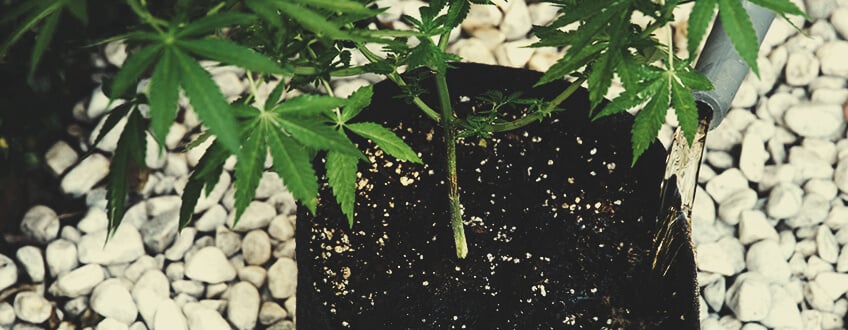
-
Watering
It’s also critical to learn how to water your plant properly. Too much water can cause root rot, and too little can result in nutrient uptake issues.
Many beginner growers tend to overwater their plants by caring a bit too much! Start out low and gradually increase the amount of water you give as your plants grow.
The amount of water you give will also depend on the size of your container. Use these figures to administer the right amount of water for your pot size:
- 1l pot = 0.25l water
- 4l pot = 1l water
- 12l pot = 3l water
- 30l pot = 7.5l water
It’s a good idea to weigh your pots before you water them. If possible, place them on a scale. Every time you water them, the soil will retain water, and each pot will become significantly heavier.
You’ll know it’s time to water again when the pots are closer to their original weight.
You can also tell when it’s time to water again by feeling the soil. A general rule of thumb is to wait for the top inch of soil to dry out before watering your plants again.
Outdoor plants are more susceptible to overwatering during rainy weather. Place them inside a greenhouse or under a temporary shelter to prevent root rot from taking hold.
-
Airflow
Ventilation is an important factor for both indoor and outdoor plants. Stagnant air can promote the growth of mold, which can ruin your hard work. Instal fans if you’re growing indoors, and place outdoor plants in a breezy area of your garden.
-
Temperature & humidity
Temperature and humidity are important variables in preventing mold and optimising yield. These factors can be controlled indoors by using humidifiers, dehumidifiers, heaters, and air conditioning.
-
Sexing
The first signs of flowers or pollen sacs emerge at the nodes—the points at which the branches meet the main stem. Female flowers will emerge as tiny buds with small white hairs, while pollen sacs are round, hairless pods.
It’s possible to tell them apart before plants are mature enough to reproduce. Plants will start to reveal their sex at the tail-end of the vegetative phase.
It’s important to identify males and females as early as possible. Doing so will enable you to separate them well before the air becomes rife with pollen.
Dedicate a separate room or grow tent to male plants. Once they’re mature, you can collect their pollen for future breeding projects. Alternatively, you can place them in a dedicated breeding tent with a female to produce seeds naturally.
BREEDING: CREATE YOUR OWN STRAINS
By growing regular cannabis seeds, it’s possible to breed your own strains at home. You can cross two strains to combine their best traits into a single plant. For example, try breeding a regular male with an autoflowering female to create a strain that flowers much faster.
Maybe there are times when you find it hard to choose between indica and sativa strains? Try breeding an indica-dominant strain with a sativa-dominant variety to create a perfectly balanced cultivar.
You can also play around with terpene profiles. Some strains are exceptionally fruity, whereas others are more earthy. Why not blend opposing terpene profiles to see what you come up with?
Likewise, cross a regular male with a high-THC or high-CBD strain to boost cannabinoid levels.
Once you’ve grown out the males and females you want to breed, it’s time to make the cross. Use these simple steps to do so.
-
STEP 1: CHOOSE A MALE AND COLLECT POLLEN
First thing’s first, you need to choose a prime male specimen. Select a male that displays the traits you want to pass down to the progeny.
If you want a tall plant, choose the tallest male you have at your disposal. Maybe you want a generation of productive males? If so, choose the plant with the most pollen sacs.
Enter the male grow space with a plastic bag and place the bag over a branch that contains mature pollen sacs. Shake your plant to release pollen into the bag.
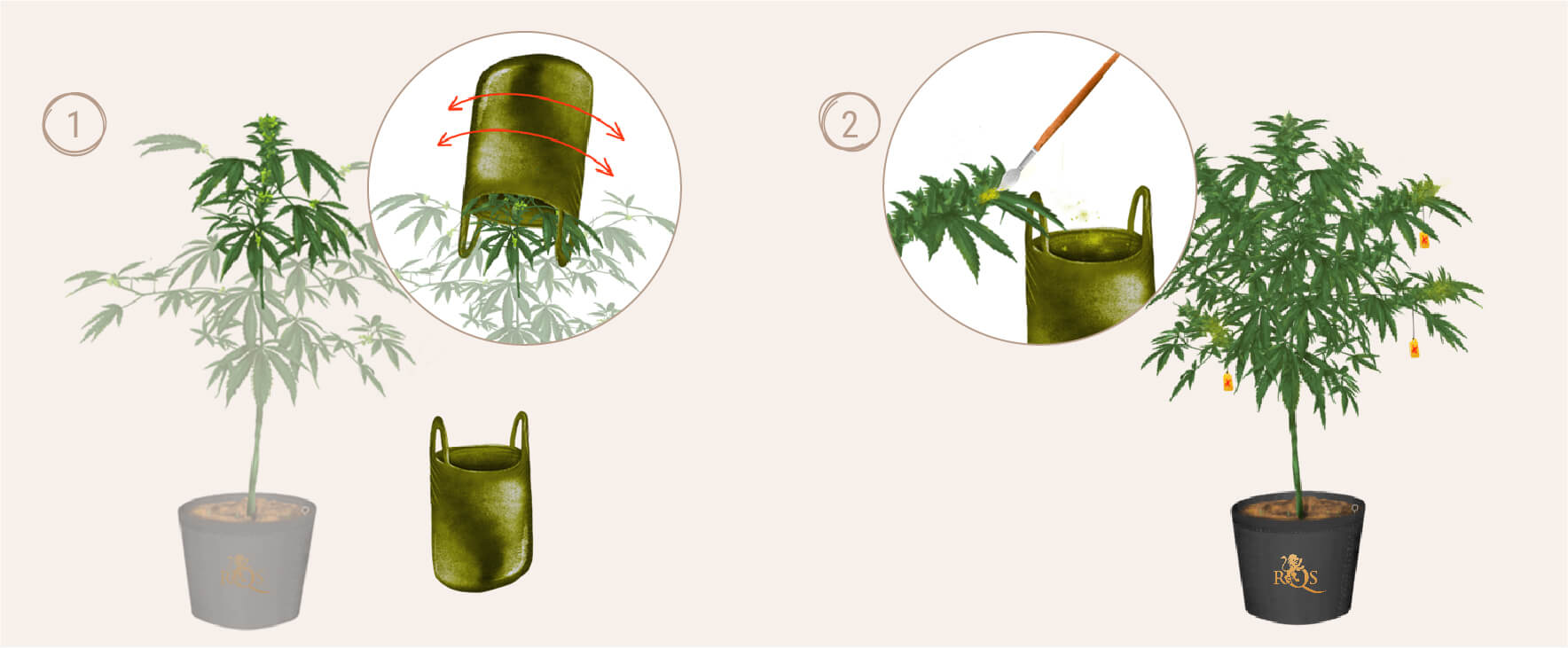
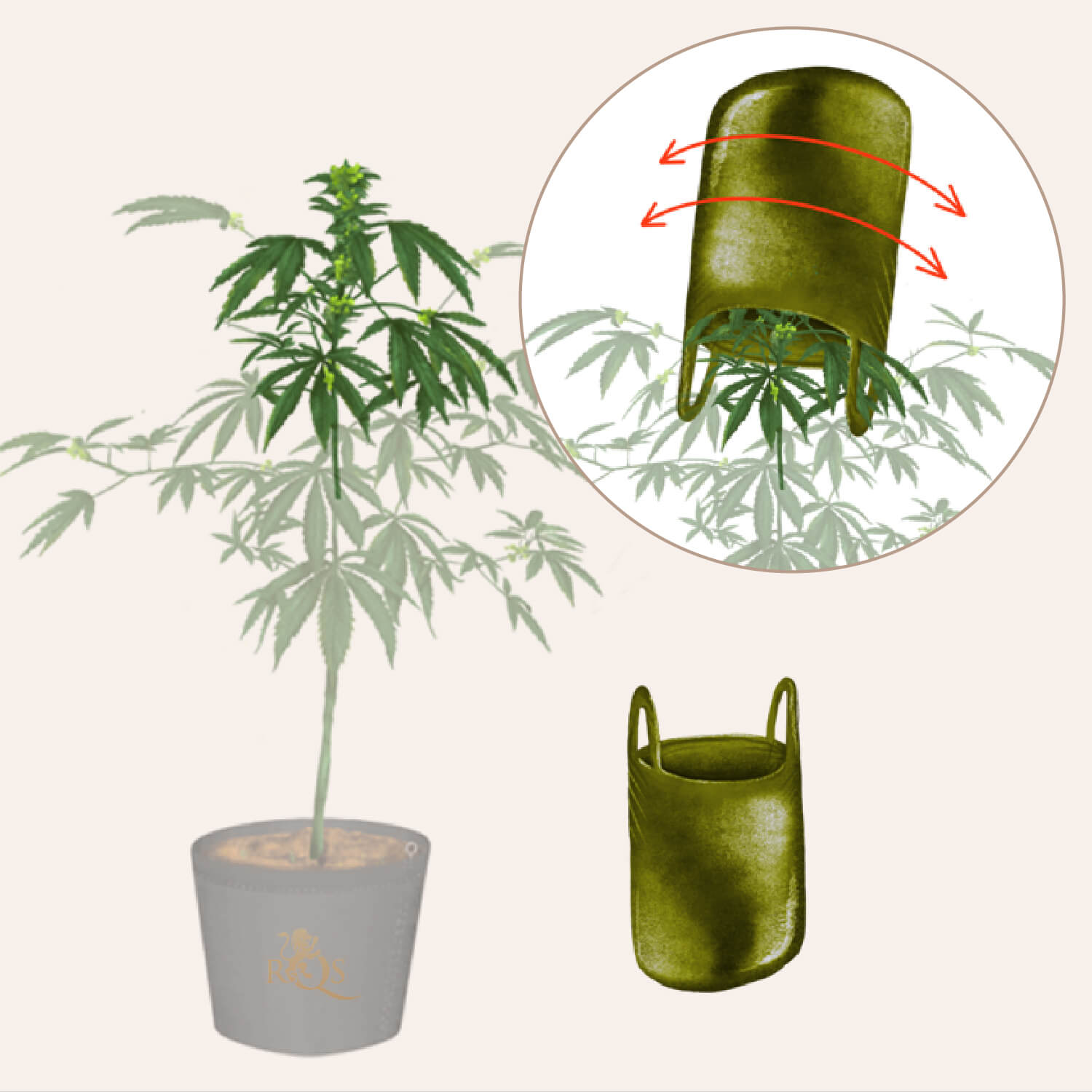
-
STEP 2: FERTILISE YOUR FEMALES
If possible, change your clothes before entering the female grow space. Any lingering pollen could accidentally fertilise unselected plants.
Select the females you want to fertilise. Dab the pollen with the end of a paintbrush and gently stroke the flowers you want to fertilise.
Fertilise the flowers on one or two branches on each plant. Tag these branches, and leave the other flowers to develop into smokable bud.
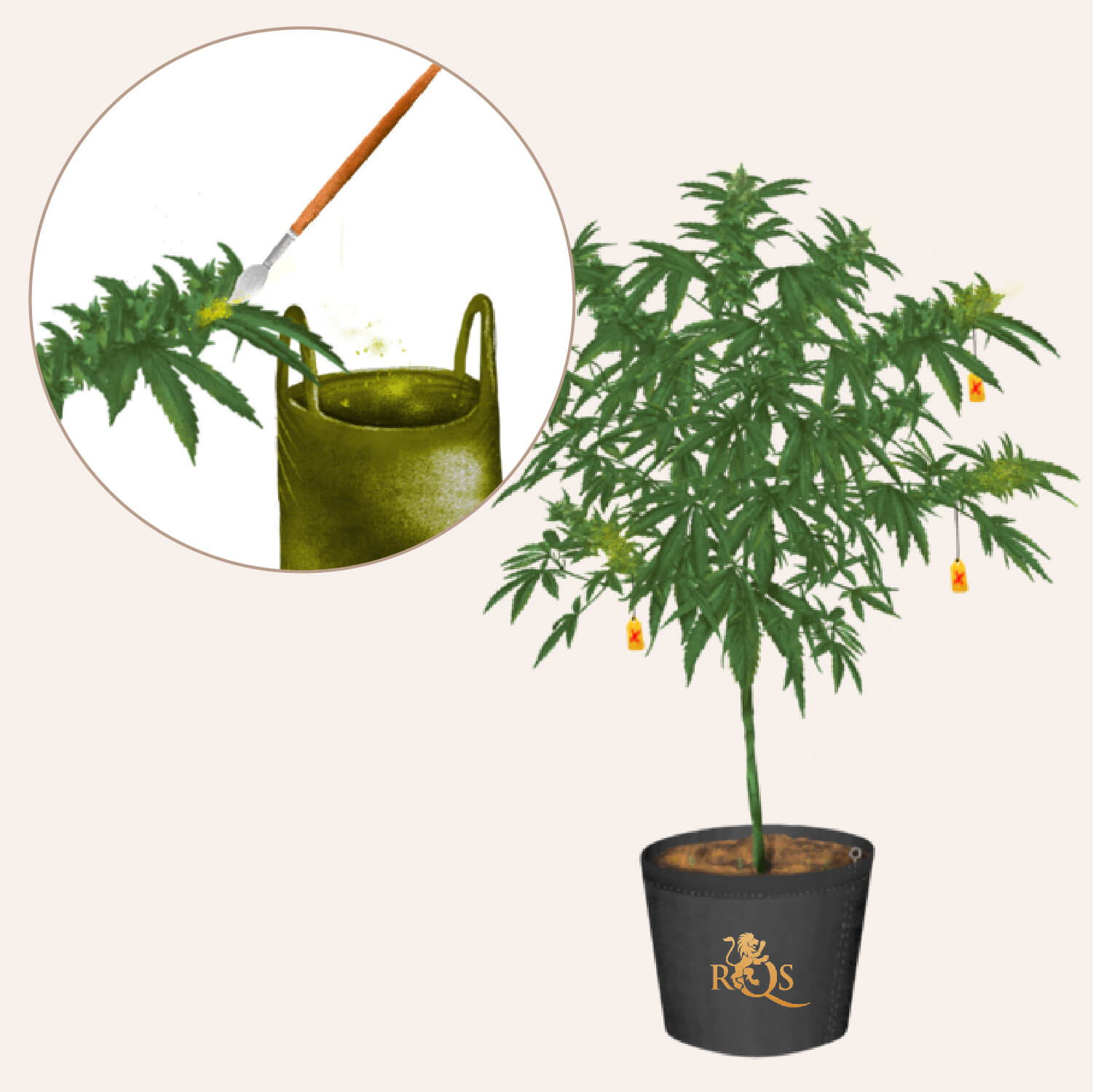
-
STEP 3: SPRAY DOWN YOUR PLANTS
Allow the pollen to work its magic for three hours. The fertilised flowers will now begin the process of forming seeds. Gently spray down the fertilised buds with water to remove excess pollen.
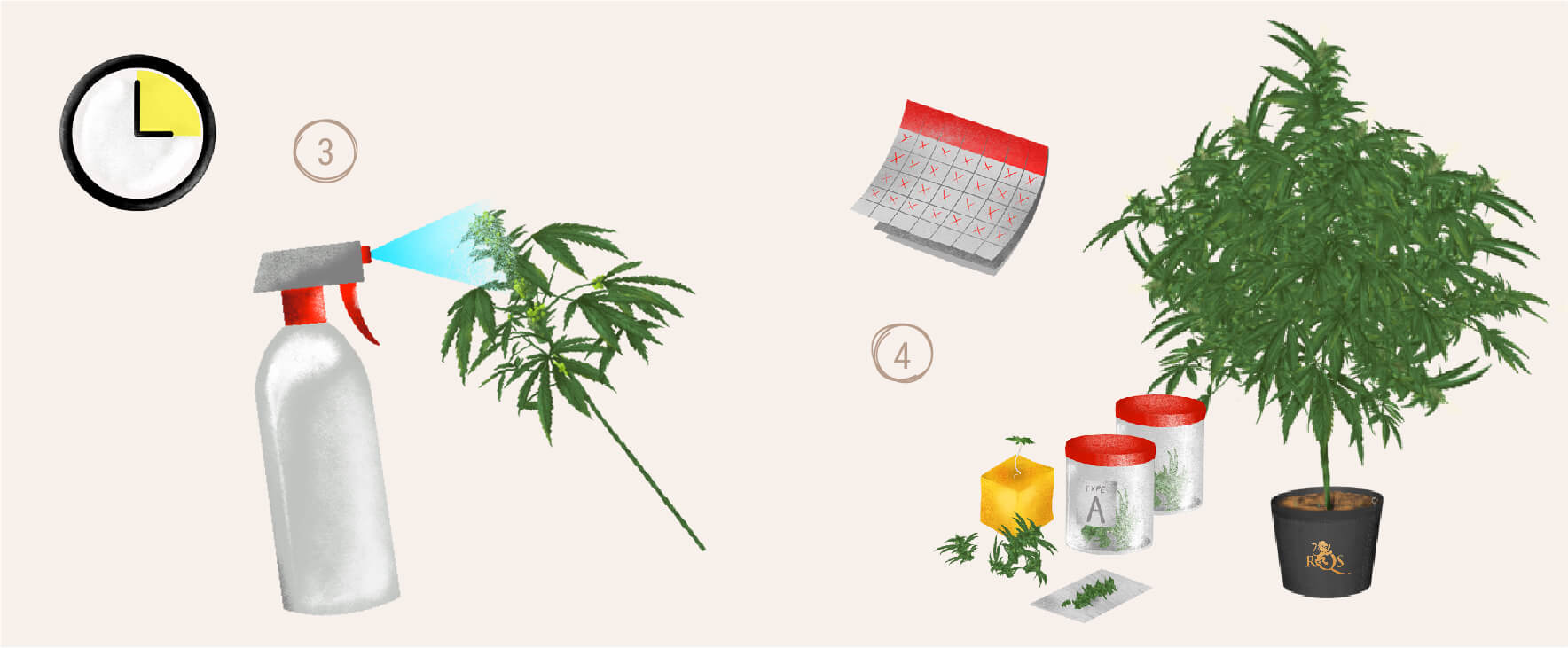
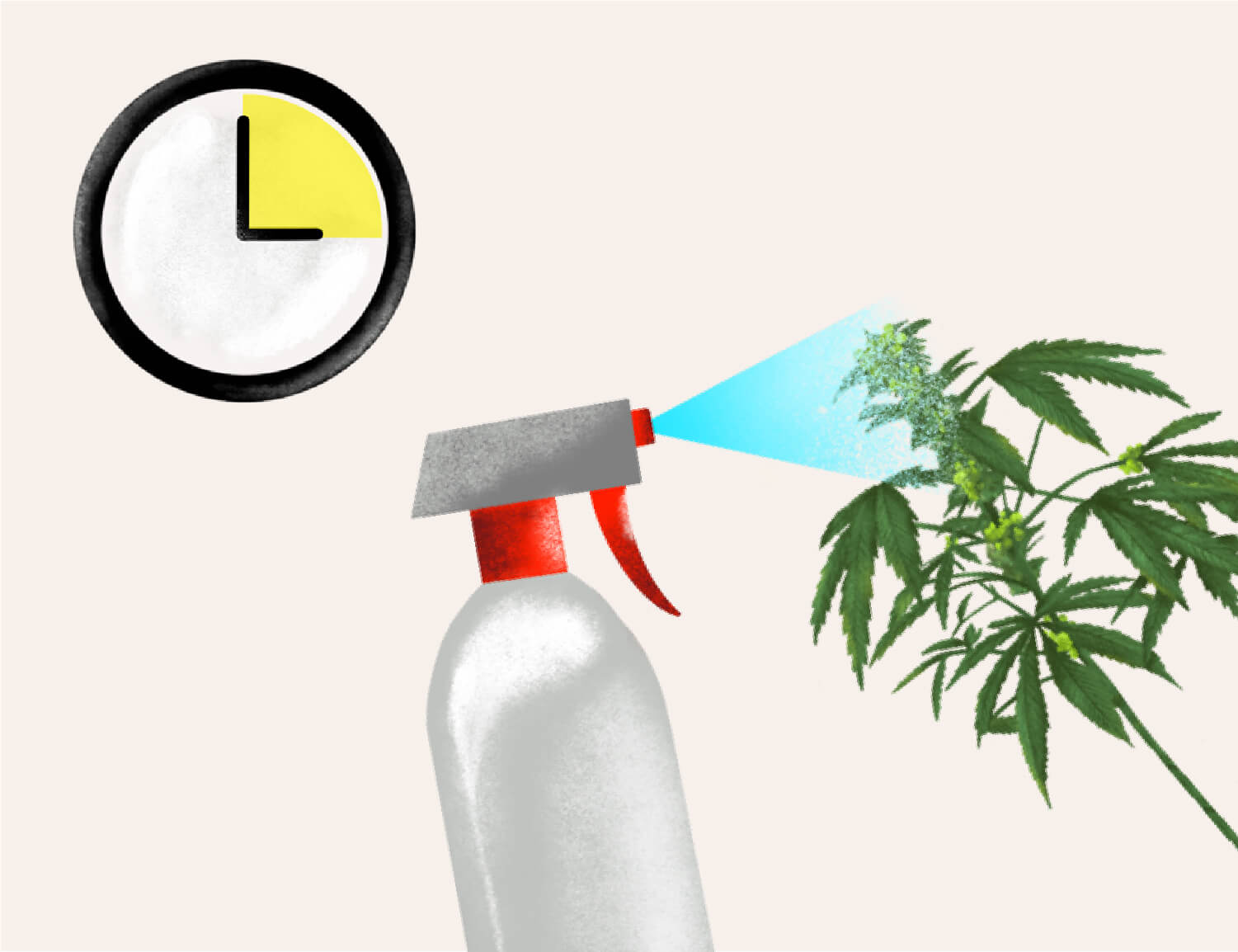
-
STEP 4: HARVEST YOUR SEEDS
The fertilised flowers will produce seeds within 2–6 weeks. When mature, dry your flowers and store them for one month. After this time, your seeds will be ready for germination. Let the experiments continue! Grow out your strain, have a smoke, and become familiar with it.
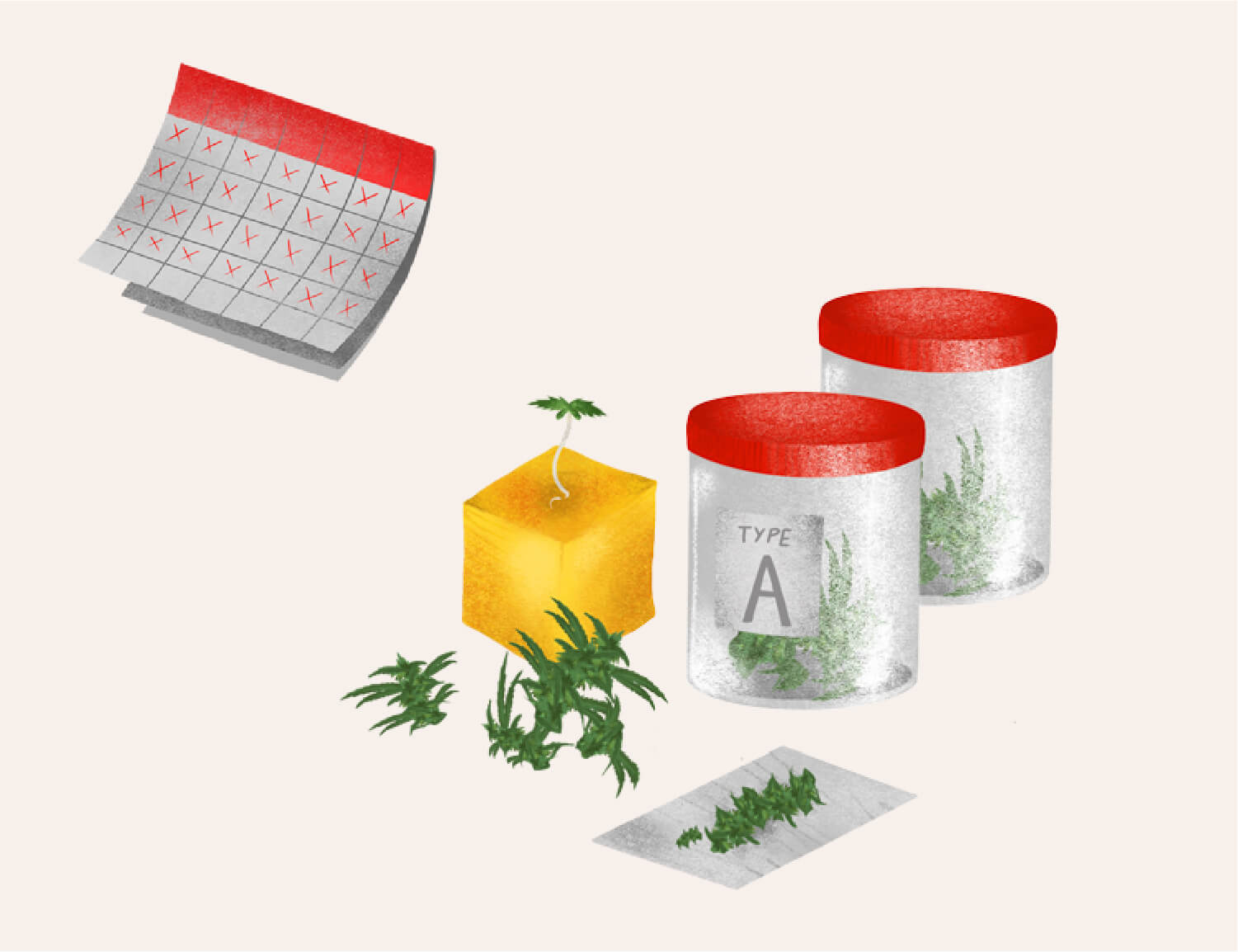
Repeat the process again with your favorite specimens to tease out the desired traits. You’re no longer limited to strains you find in seedbank archives.
You can literally create the strain of your dreams with some experimentation. Find specimens that produce your favorite terpenes, a high that you love, and flowers you find beautiful.
With each subsequent generation, you’ll be one step closer to creating your very own masterpiece!
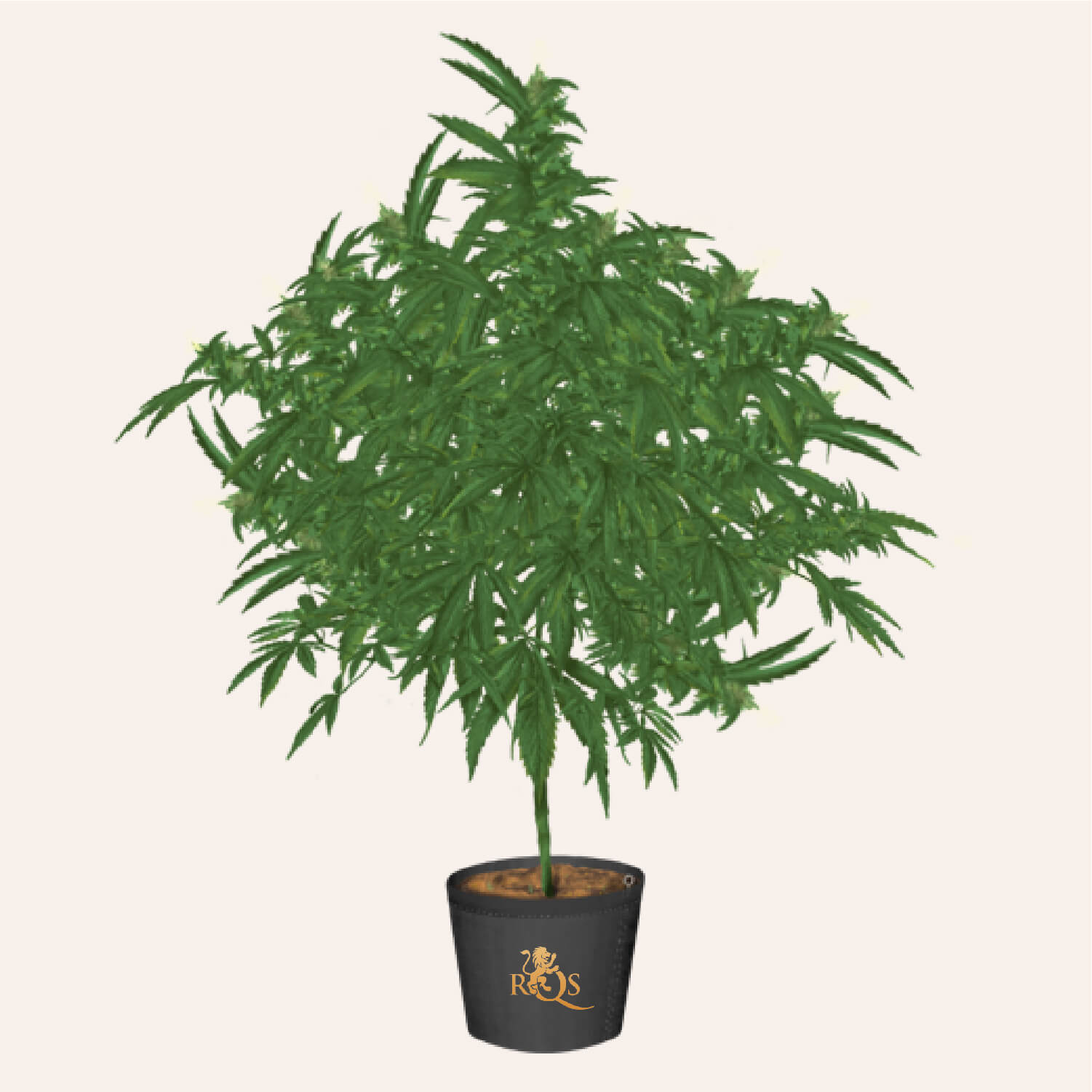
Regular vs Feminized vs Autoflowering vs CBD Learn the difference between cannabis seed types.
































